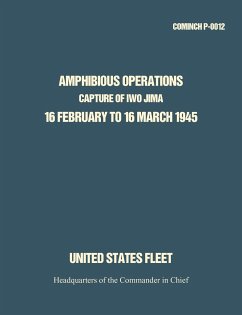The planning that allowed for the successful amphibious landings at the end of World War II actually began during the 1880s as the Marine Corps sought to define its role in the new Steel Navy. Officers braved skepticism, indifference and outright opposition to develop an amphibious warfare doctrine, with each service contributing. From the 1898 war with Spain through the disastrous 1915 Australian landing to the successful World War II assaults in the Pacific and northwest France, this chronological history explores the successes and failures pivotal to the concept of amphibious warfare through the lives and careers of fourteen officers instrumental to its development. Profiles include General George S. Patton, Jr.; Rear Admiral Walter C. Ansel, USN; Lieutenant General John A. Lejeune, USMC; Admiral William Sims, USN; and Colonel Robert W. Huntington, USMC.
Hinweis: Dieser Artikel kann nur an eine deutsche Lieferadresse ausgeliefert werden.
Hinweis: Dieser Artikel kann nur an eine deutsche Lieferadresse ausgeliefert werden.








